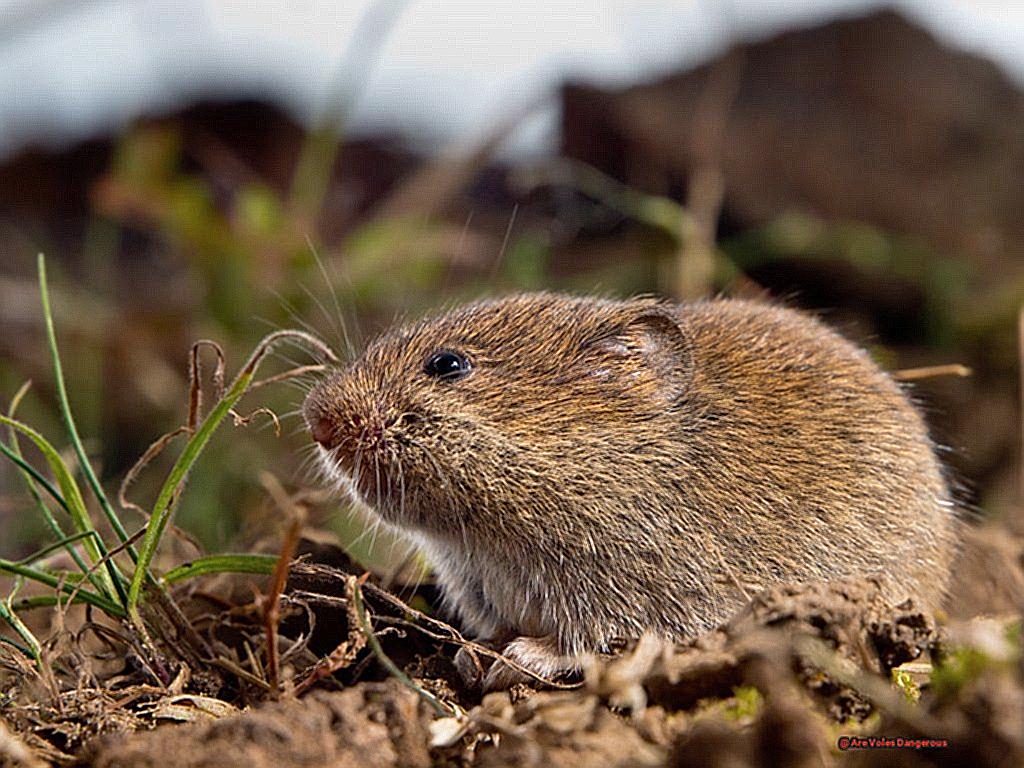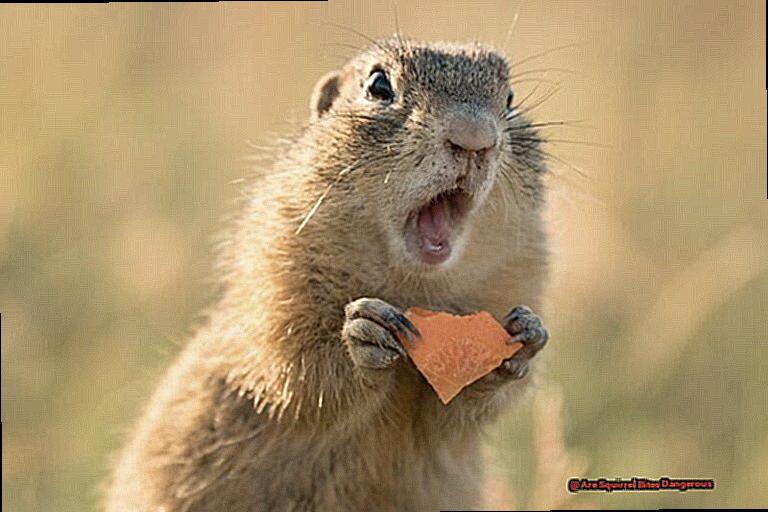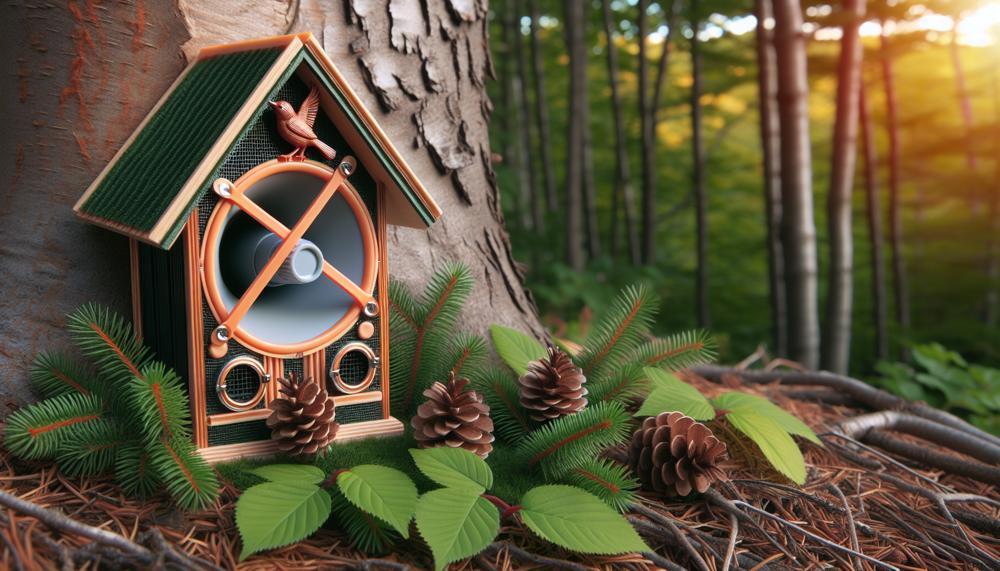Welcome to our newest blog post, where we will be delving into a topic that may not be on everyone’s radar but is certainly worth discussing – the potential danger of voles.
These tiny, mouse-like creatures may seem harmless at first glance, but don’t let their size fool you. They can wreak havoc on gardens and crops and even carry diseases.
So, grab your favorite mug of coffee and join us as we dive into the world of voles.
Table of Contents
What Do Voles Look Like?
If you’re dealing with these small pests causing damage to your yard or garden, it’s important to know how to identify them. As someone who has encountered voles in the past, I can attest that recognizing their appearance is the first step towards successful pest control.
Small But Mighty:
Often mistaken for mice due to their similar size and appearance, voles are actually small mammals with distinct differences. Unlike mice, they have short tails and stocky, round bodies shaped like a potato. Their snouts and feet are also smaller, with short claws.
Colorful Characters:
Voles typically have short brown to black fur with a darker belly, allowing them to easily blend into their surroundings. This makes them difficult to spot but if you see a small mammal with these traits scurrying around your yard, it’s most likely a vole.
Chisel-Shaped Teeth:
One of the most notable features of voles is their blunt, rounded snouts with chisel-shaped front teeth. These teeth make it easy for them to gnaw on roots, bulbs, and other vegetation, making them a nuisance for homeowners and gardeners alike.
Eyes and Ears:
Although voles may seem similar to mice at first glance, their eyes and ears can also give them away. Compared to mice, voles have smaller eyes and ears that are more noticeable upon closer observation.
Signs of Vole Damage
Despite their small size, these pesky pests have the potential to wreak havoc on yards and gardens. As someone who has studied vole damage extensively, I have come to understand the signs that homeowners should look out for in order to protect their outdoor spaces.
One of the most obvious signs of vole activity is the presence of surface runways in your yard. These runways are created by voles as they scurry above ground in search of food. Keep an eye out for 1-2 inch wide paths with clipped vegetation nearby, resembling small trails or tunnels on the surface of your lawn.
Another telltale sign of vole damage is gnaw marks on trees and plants. Voles are herbivores, and they will feed on a variety of plant life, including trees and shrubs. However, their gnaw marks can be differentiated from those of other animals by their non-uniform shape and varying angles. These marks are typically about 1/8 inch wide, 3/8 inch long, and 1/16 inch or more deep.
Aside from causing damage to vegetation, voles can also wreak havoc on field crops and irrigation systems. Patches of dead grass or damaged plantings in your yard may be a sign of vole activity.
It is important to distinguish vole damage from that caused by other animals such as rabbits or deer. While voles may also clip vegetation, their gnaw marks are much smaller and less uniform compared to those left by rabbits or deer. Additionally, vole damage is usually confined to a specific area rather than scattered throughout a yard.
To prevent vole damage, homeowners can take measures such as installing barriers around gardens and using repellents. However, it is important to note that voles are highly adaptable creatures and may find ways around these preventative methods.
How to Deter Voles From Your Garden
These small, fuzzy creatures may seem harmless at first glance, but don’t let their cute appearance fool you. With a stocky body and a shorter tail, voles are often mistaken for their distant cousins, mice. However, these pests can cause significant damage to your beloved garden by feasting on plant roots and chewing through bark. If you find yourself facing a vole infestation in your garden, fear not. In this article, we will explore the key methods for deterring voles and protecting your precious plants.
Utilize Natural Vole Repellents
When it comes to warding off these pesky critters, natural solutions are often the most effective. Castor oil, readily available at most garden centers, is a popular vole repellent. Dilute it with water and spray it around your plants and trees to create an inhospitable environment for voles. Other natural repellents include garlic, cayenne pepper, and the urine of predators.
Construct Physical Barriers
Another effective way to safeguard your plants from voles is by erecting physical barriers. Mesh wire or hardware cloth can be used to create a protective barrier around your plants, making it challenging for voles to reach them. Alternatively, invest in tree guards designed specifically to shield young trees from vole damage. Remember to bury the barriers at least 6-10 inches below ground level to prevent voles from burrowing underneath.
Employ Natural Predators
Invite natural predators into your yard to help control the vole population. Cats, dogs, and birds of prey like owls and hawks are all natural enemies of voles and can aid in keeping their numbers in check. However, be sure to only introduce predators that are native to your area and won’t cause harm to other wildlife.
Get Rid of Voles
Voles, also known as meadow mice, are cunning rodents that can wreak havoc on your yard and garden. These pesky creatures can rapidly multiply and cause extensive damage to your plants, trees, and lawns. But fear not – there are various effective and humane methods for getting rid of them.
Tidy Up Your Landscape
Voles are drawn to cluttered and overgrown areas where they can hide and find food. By keeping your yard clean and free of debris, you make it less desirable for voles. This includes removing piles of leaves, brush, and tall grasses where these critters may burrow.
Eliminate Their Food Sources
Voles have a diverse diet and will devour plants, seeds, and insects. By depriving them of food sources, you can discourage them from sticking around. Be sure to pick up fallen fruits and vegetables, keep bird feeders away from your garden, and store pet food indoors.
Utilize Natural or Commercial Repellents
There are several natural repellents that can effectively deter voles. These include castor oil, garlic, and predator urine (such as fox or coyote urine). Additionally, you can purchase commercial repellents specifically designed for voles.
Install a Barrier
Installing a fence around your garden or yard can also help keep voles out. Make sure the fence is buried at least 6 inches underground to prevent these burrowing creatures from tunneling underneath it.
Incorporate Gravel
Voles prefer soft soil for burrowing, so lining the perimeter of your garden or planting beds with gravel can make it more challenging for them to dig tunnels.
Experiment with Snap Traps
Snap traps are a humane way to capture voles without causing harm. Place the traps along vole runways or near damaged plants.
Learning How to Deter Voles
Voles, though petite in size, can cause substantial harm to your property. These troublesome rodents can quickly transform your picturesque backyard into a chaotic mess of ruined plants, trees, and gardens. But fret not, as there are effective methods to deter voles from causing damage to your property.
So, what are these methods? Let’s delve into the topic and explore some efficient ways to prevent voles from wreaking havoc in your yard.
Identifying the Culprit: Voles or Moles?
First and foremost, it is crucial to accurately identify the problem before taking action. Voles are often mistaken for moles due to their similar appearance and behavior. However, these two pests have distinct habits and diets. While voles are herbivores that feed on plants, moles primarily consume insects. Knowing which pest you’re dealing with will help you select the most effective method for deterring them.
Understanding Vole Habits and Dietary Preferences
To effectively prevent voles from damaging your property, it is vital to comprehend their habits and dietary preferences. Voles are active throughout the year and reproduce rapidly, making it imperative to take prompt action upon detecting their presence. They also tend to build intricate tunnel systems underground, providing them easy access to your plants.
Determining the Best Solutions for Your Yard and Household
When it comes to deterring voles, there is no one-size-fits-all solution. It would be best to consider your yard’s size and layout, along with any potential risks to your family or pets. For instance, if you have children or pets playing in the yard, you may want to refrain from using chemical solutions and opt for more natural methods.
Safeguarding Your Lawn, Trees, Flowers, and Gardens from Voles
One of the most effective ways to prevent voles from damaging your property is by implementing physical barriers such as mesh wire or hardware cloth around your plants and trees.
Conclusion
In conclusion, while voles may appear harmless at first glance, their small size can be deceiving. These tiny creatures have the potential to wreak havoc on gardens and crops, as well as carry diseases. Therefore, it is crucial to know how to identify voles and recognize signs of their presence in order to effectively deter them from your yard or garden.
Voles possess distinct physical features such as short tails, stocky bodies, and chisel-shaped front teeth that set them apart from other pests like mice. Their smaller eyes and ears make it easier to differentiate between the two.
To prevent vole damage, homeowners can take various measures such as using natural repellents, constructing physical barriers, introducing natural predators, or capturing and releasing voles. However, it is important to keep in mind that these methods may need to be tailored based on the size and layout of your yard as well as any potential risks to your family or pets.
By understanding vole habits and dietary preferences, homeowners can effectively safeguard their lawns, trees, flowers, and gardens from these pesky rodents. Remember to always accurately identify the pest before taking action and consider utilizing more humane methods for deterring voles while maintaining compassion.





